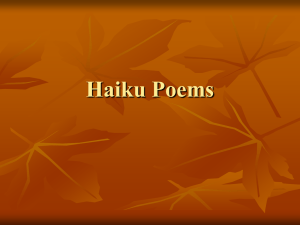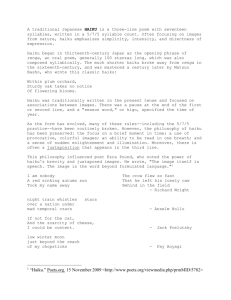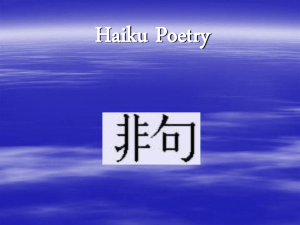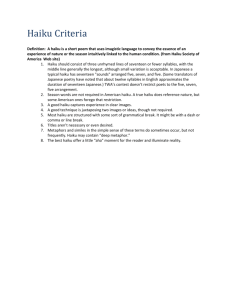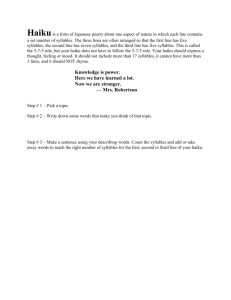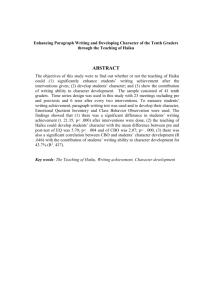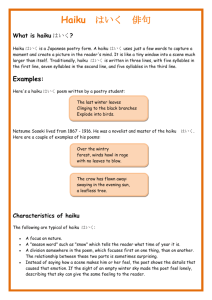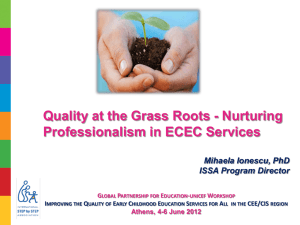Haiku Notes
advertisement
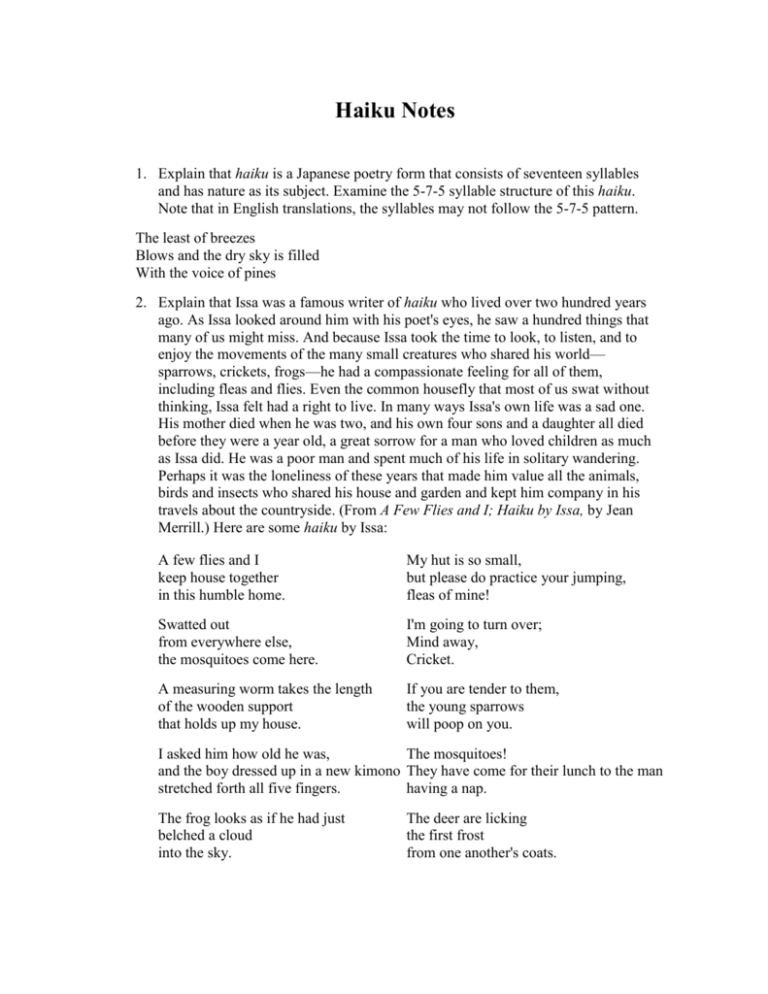
Haiku Notes 1. Explain that haiku is a Japanese poetry form that consists of seventeen syllables and has nature as its subject. Examine the 5-7-5 syllable structure of this haiku. Note that in English translations, the syllables may not follow the 5-7-5 pattern. The least of breezes Blows and the dry sky is filled With the voice of pines 2. Explain that Issa was a famous writer of haiku who lived over two hundred years ago. As Issa looked around him with his poet's eyes, he saw a hundred things that many of us might miss. And because Issa took the time to look, to listen, and to enjoy the movements of the many small creatures who shared his world— sparrows, crickets, frogs—he had a compassionate feeling for all of them, including fleas and flies. Even the common housefly that most of us swat without thinking, Issa felt had a right to live. In many ways Issa's own life was a sad one. His mother died when he was two, and his own four sons and a daughter all died before they were a year old, a great sorrow for a man who loved children as much as Issa did. He was a poor man and spent much of his life in solitary wandering. Perhaps it was the loneliness of these years that made him value all the animals, birds and insects who shared his house and garden and kept him company in his travels about the countryside. (From A Few Flies and I; Haiku by Issa, by Jean Merrill.) Here are some haiku by Issa: A few flies and I keep house together in this humble home. My hut is so small, but please do practice your jumping, fleas of mine! Swatted out from everywhere else, the mosquitoes come here. I'm going to turn over; Mind away, Cricket. A measuring worm takes the length of the wooden support that holds up my house. If you are tender to them, the young sparrows will poop on you. I asked him how old he was, The mosquitoes! and the boy dressed up in a new kimono They have come for their lunch to the man stretched forth all five fingers. having a nap. The frog looks as if he had just belched a cloud into the sky. The deer are licking the first frost from one another's coats. Write a group haiku on the board using one of the word lists. Have students write their own haiku. Extension: See also: The National Clearinghouse for U.S.-Japan Studies' Japan Digest The History and Artistry of Haiku. Tanka is a Japanese poetic form that consists of 31 syllables (5-7-5-7-7). It is the most fundamental poetic form in Japan since haiku is derived from it. Its themes include love between men and women, deep attachment to nature, the joys and sorrows of the changing seasons, close relationships, and reflections and insights on aspects of one's life. (From "The Japanese Mind Seen Through the Poetic Tradition," by Makoto Ooka, Nippon Steel News, February, 1983). Here is a student example of tanka: The mist of morning is like the blanket of time which slows the world down. When the mist lifts from the morn, The world will be born again. --Annette Greenbaum
